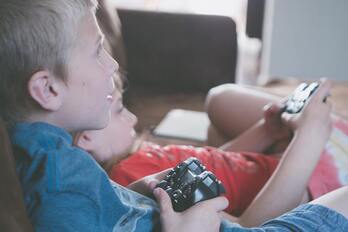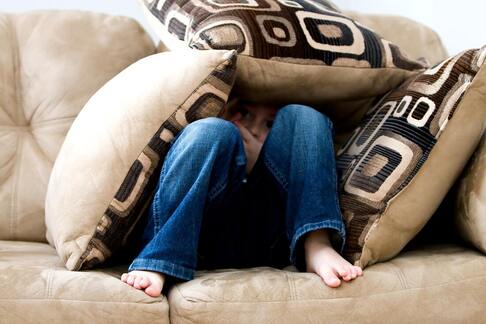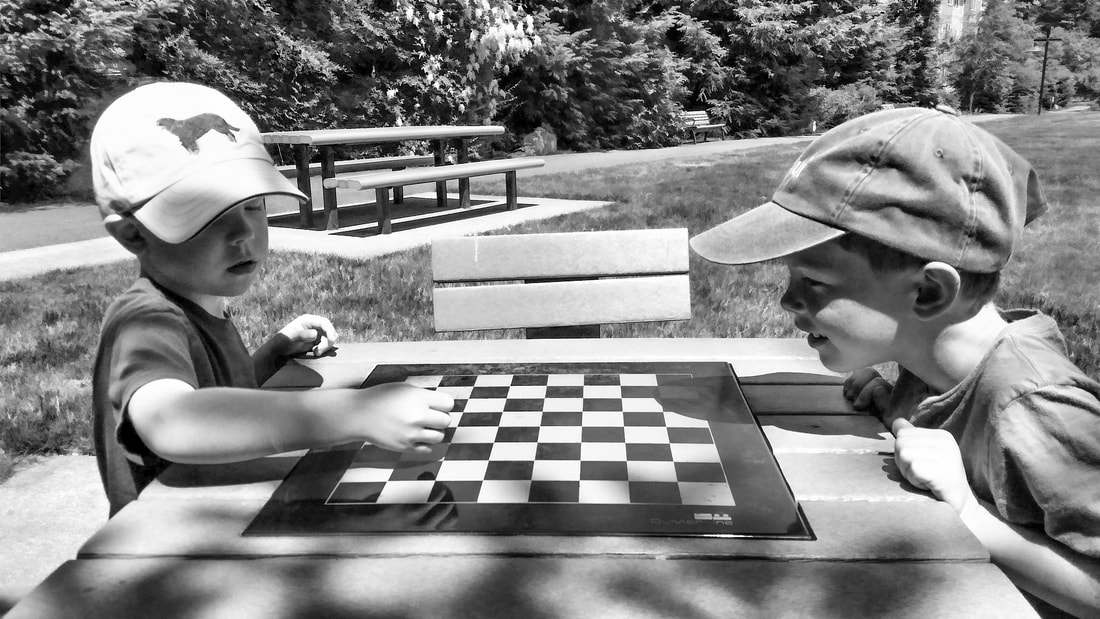Game Over. When to Put A Stop to Your Child’s Gaming.
By Amber Stapleton (Provisional Psychologist)
July 2019

Do you ever wonder if your child spends too much time on the computer, iPad, PlayStation, or Xbox? It’s a problem far too many parents are facing given the recent surge in “Gaming” over the past few years, which has been associated with a dramatic reduction of typical face-to-face playdates, the development of key interpersonal skills, and poorer academic outcomes in many of our children and adolescents (1). More and more, kids prefer to stay at home and play video games, instead of socialising with their peers, participate in extra circular activities, or keep up with their school work.
So, what is Gaming anyway? Gaming refers to participation in electronic games, whether this be via consoles, computers, or mobile phones. Gaming can be done alone or with other fellow players who are either in the same location, or logged on remotely from other houses, suburbs, states or even countries. Indeed, today it is not uncommon for gamers to “live stream” their sessions which can lead to increasingly lengthy “online missions”, often lasting well into the day and night.
So, what is Gaming anyway? Gaming refers to participation in electronic games, whether this be via consoles, computers, or mobile phones. Gaming can be done alone or with other fellow players who are either in the same location, or logged on remotely from other houses, suburbs, states or even countries. Indeed, today it is not uncommon for gamers to “live stream” their sessions which can lead to increasingly lengthy “online missions”, often lasting well into the day and night.
Why is Gaming Problematic and What are the Impacts?
Gaming has become so problematic recently that it is now a diagnosable syndrome, one that many of our children and adolescents are struggling with every day.
Recent research has found that Gaming taps into the same reward system in the brain that is typically activated by favourable foods, and positive social interactions and relationships. When the reward system in the brain is activated, whatever behaviour resulted in this activation is reinforced, leaving the person with an increased desire to engage in the behaviour again. Unfortunately, for “Gamers”, this means that they are often left wanting to play games more frequently and for longer periods of time. The down side of this for children of course is that activities they previously found rewarding such as socialising, no longer result in such an effect. Furthermore, game developers are well aware of the effect of gaming on the brain and design games specifically to “hook the user in”, resulting in reliance, unhealthy habits and ultimately, addiction.
Recent research has found that Gaming taps into the same reward system in the brain that is typically activated by favourable foods, and positive social interactions and relationships. When the reward system in the brain is activated, whatever behaviour resulted in this activation is reinforced, leaving the person with an increased desire to engage in the behaviour again. Unfortunately, for “Gamers”, this means that they are often left wanting to play games more frequently and for longer periods of time. The down side of this for children of course is that activities they previously found rewarding such as socialising, no longer result in such an effect. Furthermore, game developers are well aware of the effect of gaming on the brain and design games specifically to “hook the user in”, resulting in reliance, unhealthy habits and ultimately, addiction.
How do I know if my child spends too much time Gaming?
Parenting guidelines recommend that children under two years old should have ZERO screen time (including watching television, electronic media, computers and electronic games), children aged 2-5 years should have less than 1 hour per day, and 5-17 years less than two hours per day (2). Unfortunately, these guidelines are not always adhered to, and kids are exceeding recommendations by hours per day resulting in adverse consequences including sleep difficulties, weight gain, problematic communication skills, and difficulties with self-control (4).
So, when is the right time to put a stop to Gaming?
Some key identifiers to look out for in your child which may suggest that Gaming has become problematic include:
So, when is the right time to put a stop to Gaming?
Some key identifiers to look out for in your child which may suggest that Gaming has become problematic include:
- Lowered interest in school achievement
- Feelings of anger and frustration when they are not allowed access to a video game
- Thinking about the next Gaming session when not online and experiencing calmness, peacefulness, or euphoria while playing
- Loss of interest in previously enjoyed activities like meeting with friends or playing sports
- Excessive frustration or anxiety when "the server is down"
- Distorted perception of time (e.g., suddenly realising that several hours have passed in what seemed like just one hour)
- Changes in eating patterns
How do I reduce the amount of time my child is Gaming?
So, you know your child is Gaming way too much, but how do you put a stop to it?
As a first step, it is always beneficial to have a calm chat with your child around how much time they are spending on these activities and the effect it may be having on them mentally, physically and socially. This allows the child to take some responsibility for their behaviours, and makes space for their own self-reflection.
Following this, it can be helpful l to make a “whole of family plan” around leisure and entertainment time that balances Gaming with other activities (6). You may wish to include activities that each of the individuals in the family enjoy together and separately, and try and schedule these into the week. This can help to reduce “blaming” or “targeting” one individual for spending too much time on one activity, and instead encourages all family members to disperse their time evenly.
Additional strategies that are helpful in reducing Gaming and creating healthy boundaries may include:
Putting in these strategies may help to reduce the amount of time your child or adolescent spends Gaming and help increase development in other areas which may have been affected.
If you find your child is really struggling to stick to the boundaries, it may also be helpful to access a Psychologist for some more intensive support and guidance.
As a first step, it is always beneficial to have a calm chat with your child around how much time they are spending on these activities and the effect it may be having on them mentally, physically and socially. This allows the child to take some responsibility for their behaviours, and makes space for their own self-reflection.
Following this, it can be helpful l to make a “whole of family plan” around leisure and entertainment time that balances Gaming with other activities (6). You may wish to include activities that each of the individuals in the family enjoy together and separately, and try and schedule these into the week. This can help to reduce “blaming” or “targeting” one individual for spending too much time on one activity, and instead encourages all family members to disperse their time evenly.
Additional strategies that are helpful in reducing Gaming and creating healthy boundaries may include:
- Setting limits to screen times and how often they have access to games (you may choose to have game free days)
- Using a stop watch or screen lock as a control measure to limit sessions, instilling the idea of developing a balance and self-control
- Always have devices in an area where you are able to see what they are doing (do not put in bedrooms)
- Make a conscious effort to play physical games together as a family as a way of strengthening their connections and continuing to build social skills.
- Avoid just-before-bed Gaming time as this can be stimulating and cause sleep disturbances
- Increase the importance of extracurricular activities and help your child explore their interests
- Setting aside time for the whole family to “unplug”
- Make Gaming a privilege rather than a right
Putting in these strategies may help to reduce the amount of time your child or adolescent spends Gaming and help increase development in other areas which may have been affected.
If you find your child is really struggling to stick to the boundaries, it may also be helpful to access a Psychologist for some more intensive support and guidance.
Sources
1. Wise RA (1998). Drug-activation of brain reward pathways. Drug and alcohol dependence, 51(1-2): 13-22.
2. Australian parents council https://austparents.edu.au/wp-content/uploads/2019/03/screentime.pdf
3. LSAC Annual Statistical Report 2015 chapter Published by the Australian Institute of Family Studies, September 2016.
4. Sydney Childrens Hopsital https://www.schn.health.nsw.gov.au/fact-sheets/screen-time-and-children
5. http://www.techaddiction.ca/symptoms_of_video_game_addiction.html
6. Esafety https://www.esafety.gov.au/parents/big-issues/time-online
1. Wise RA (1998). Drug-activation of brain reward pathways. Drug and alcohol dependence, 51(1-2): 13-22.
2. Australian parents council https://austparents.edu.au/wp-content/uploads/2019/03/screentime.pdf
3. LSAC Annual Statistical Report 2015 chapter Published by the Australian Institute of Family Studies, September 2016.
4. Sydney Childrens Hopsital https://www.schn.health.nsw.gov.au/fact-sheets/screen-time-and-children
5. http://www.techaddiction.ca/symptoms_of_video_game_addiction.html
6. Esafety https://www.esafety.gov.au/parents/big-issues/time-online


